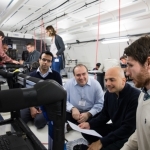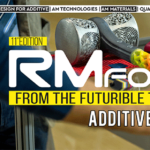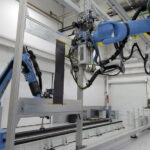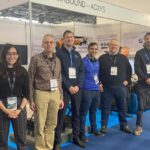Cambridge Graphene Centre, on the University of Cambridge’s West Campus, is investigating the science and technology of graphene, carbon allotropes, layered crystals and hybrid nanomaterials. And working with the Graphene Flagship programme and the European Space Agency, researchers from the centre tested the substance in microgravity conditions for the first time aboard the Zero-G parabolic flight. Periods of weightlessness up to 23 seconds long each are created by taking the plane through a series of parabolic manoeuvres. The researchers taking on the stomach-churning conditions on the flight aimed to test graphene’s potential for use in cooling systems in satellites. Professor Andrea Ferrari, the director of the Cambridge Graphene Centre, and science and technology officer and chair of the management panel for the Graphene Flagship, said: “We had in total 11 and a half minutes of weightlessness. It’s really exhiliarating. It’s difficult to describe. It’s very peaceful and a very nice experience. “We know there are a lot of opportunities. One of them, recognised early on, is space applications.” The flight was the first time graphene has been tested in a space-type application. “We are using graphene in what are called loop-heat pipes. These are pumps that move fluid without the need for any mechanical parts, so there is no wear and tear, which is very important for space applications,” said Prof Ferrari. The aim is to improve the performance of cooling systems used in satellites by making use of graphene’s excellent thermal properties. Megan Christian, a researcher at the National Research Council of Italy, said: “This experiment is on satellite loop-heat pipes. The idea is to transport heat from one place to another. You can do it over really long distances and we really want to use these in space. In fact, they are used now but what we are trying to do is improve the materials so you can get better results.” A loop-heat pipe utilises the evaporation and condensation of a fluid to transport heat from hot electronic systems out into space. The pressure of the evaporation-condensation cycle forces fluid through the closed systems, providing continuous cooling. A metallic wick is used as the main element of the loop-heat pipe and it is here that fluid evaporates. The researchers tried coating the wick in graphene to improve the heat transfer from the hot systems into the wick. The porous structure of the graphene coating also increases the interaction of the wick with the fluid and improves the capillary pressure so that the liquid flows through the wick more quickly. Dr Marco Molina, chief technical officer in the space division at industry partner Leonardo, said: “We are aiming at an increased lifetime and an improved autonomy of the satellites and space probes. “By adding graphene, we will have a more reliable loop-heat pipe that can operate autonomously in space.” Cambridge Graphene Centre research associate Yarjan Samad added: “We were testing graphene-based loop-heat pipes in the zero gravity environment to see if they make them better, because they do make them better in ground conditions. “It was truly a wonderful experience to feel weightlessness, but also the hyper-gravity moments in the plane. I was very excited but at the same time a bit nervous. I couldn’t sleep the night before.” The graphene-coated wicks demonstrated excellent performance during the flight, as they had in the lab. The researchers confirmed more efficient heat and fluid transfer compared to the untreated wicks. Based on these findings, the researchers will continue to develop and optimise the coatings for genuine space applications. “The next step will be to start working on a prototype that could go either on a satellite or on the space station,” said Prof Ferrari. The research was supported by the Graphene Flagship and the European Space Agency, as a collaboration between researchers from the University of Cambridge, the Université libre de Bruxelles in Belgium, the National Research Council of Italy (CNR), Italy, and industry partner Leonardo in Italy. Graphene Flagship is the European Union’s largest research initiative, with a 1billion euro budget to take graphene from laboratories into the market. Vincenzo Palermo, vice-director at Graphene Flagship and professor at Chalmers University of Technology, said: “This is a very nice example of how the Flagship is working, bringing together three academic partners and one big goal for a clearly defined goal for an application. If it’s successful then industry will have a real application and a new technology and we’ll have produced a big result for Europe.”













